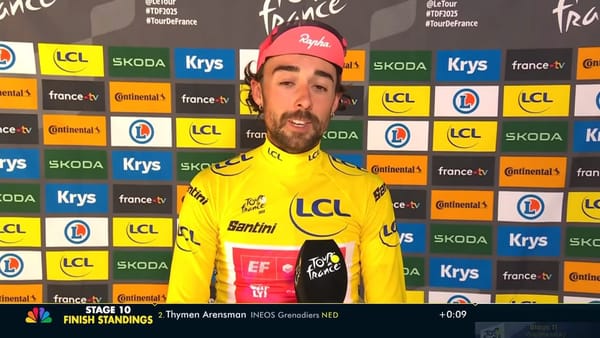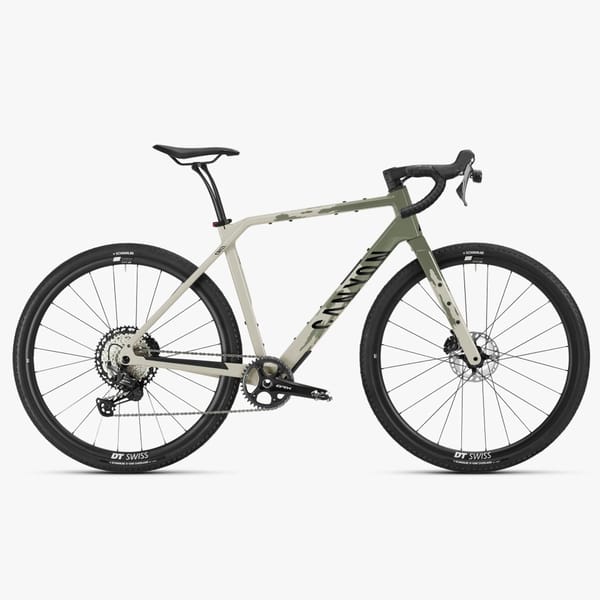A Guide to the 2018 Giro d'Italia
With the Spring Classics in the rear-view mirror it’s now time for the first Grand Tour of the season, the Giro d’Italia. The race is always big news, but with twin swirling controversies added to the mix for 2018; Chris Froome’s participation in the race and the race’s start in Israel, this year is sure to be full of plenty of drama.
2018 marks the 101st edition of the “Corsa Rosa”, here’s what you need to know before the pros hit the pavement on Friday.
The Route
The biggest news, the 2018 Giro d’Italia starts with three stages in Israel. This not only marks the first time the Giro has trekked beyond the reaches of Europe, it’s the first time any of the Grand Tours has done so.
Racing begins Friday (5/4/2018) with a 9.7km (6 mile) individual time trial through the streets of Jerusalem. Then it’s off to two relatively flat sprinter’s delight stages before the tour will pack up and fly from Israel to Sicily.
Stage Profiles
The Giro is all about brutal climbing stages, this year’s edition is no exception with six summit finishes. The race will finish atop Mount Etna, Montevergine, Gran Sasso, Zoncolan, Jafferau, and Cervinia. The highest peak will be the Colle delle Finestre at 2,178m (7145 ft). The highest climb of each year’s Giro is dedicated to Fausto Coppi, the Italian cycling legend who died in 1960. Here are the biggest climbs of the Giro:
Stage 6 (Etna):
Etna (1,736m): 15km at 6.5%. Cat. 1.
Stage 8 (Montevergine di Mercogliano):
Montevergine (1,260m): 17.1km at 5%. Cat 2.
Stage 9 (Gran Sasso):
Roccaraso (1,252m): 6.9km at 6.5%. Cat 2.
Calascio (1,190m): 13.5km at 6%. Cat 2.
Gran Sasso d’Italia (Campo Imperatore, 2,135m): 26.5km at 3.9%. Cat 1.
Stage 10 (Gualdo Tadino):
Fonte della Creta (1,254m): 15.7km at 5.8%. Cat 2.
Stage 14 (Zoncolan):
Passo Duron (1,069m): 4.4km at 9.6%. Cat 2.
Mount Zoncolan (1,730m): 10.1km at 11.9%. Cat 1.
Stage 15 (Sappada):
Passo Tre Croci (1,805m): 7.9km at 7.3%. Cat 2.
Passo di Sant’Antonio (1,470m): 8.3km at 7.5%. Cat 2.
Stage 18 (Pratonevoso):
Pratonevoso (1,607m): 13.9km at 6.9%. Cat 1.
Stage 19 (Bardonecchia):
Colle del Lys (1,311m): 13.8km at 4.3%. Cat 2.
Colle delle Finestre (2,178m): 18.5km at 9.2%. Cima Coppi.
Bardonecchia (Jafferau, 1,908m): 7.2km at 9.1%. Cat 1.
Stage 20 (Cervinia):
Col Tsecore (1,623m): 16km at 7.7%. Cat 1.
Col Saint-Pantaléon (1,664m): 16.5km at 7.2 %. Cat 1.
Cervinia (2,001m): 18.2km at 5.3%. Cat 1.
There are three rolling stages on Sicily before the first uphill finish on stage 6. The active volcano of Mt. Etna marks the finish, its 15km of climbing averaging 6.5%.
For stage 7 the race moves to the Italian mainland and starting in the south starts heading north towards the mountains. Stage 7 will be for the sprinters, then uphill finished on stages 8 and 9 will lead into a rest day.
Stage 10 will also likely go to the sprinters, while stage 11 with it’s tough final climb will not. Stage 12 finished on the Imola raceway in a likely sprint. Stage 13 suits the sprinters as well. Stage 14, however, features one of Europe’s hardest climbs: Monte Zoncolan (10km at 12%, maximum of 22%).
Stage 15 leads into the third rest day, it’s a tough stage in the Dolomites with four categorized climbs.
After the rest day, riders will take on their second and final individual time trial, over 34.2km of mostly flat terrain. Stage 17 is bumpy but things most likely will come together for a sprint. Stage 18 starts mostly flat but the final 15km climb to the finish at Prato Nevoso (15km at 7%) will break things up. Stage 19 is the final summit finish of the race and also features 9km of gravel.
Stage 20 is flat for 130km before riders get to take on 4,000m of climbing over the final 85km. After that grueling stage riders will enter Rome for just the third Giro finish there in its 101-year history.
The Contenders
Tom Dumoulin (Sunweb)
He’s the defending champion and he’s in tip top time-trialing form. I could see the Dutchman taking the Giro with a couple strong individual TTs. Hopefully he doesn’t have to relive this incident though:
Chris Froome (Sky)
Shouldn’t be in the race. But, the four-time Tour de France champion has a good shot of winning. Even if he has to stay away from his salbutamol. Froome has been underwhelming so far this year, but he’s had his sights set on a win at the Giro, so I’m sure he’ll show up ready.
Fabio Aru (UAE Team Emirates)
He’s got Grand Tour chops: won the 2015 Vuelta a España, third in the 2014 Giro and second in 2015. Injury kept him out of the Giro last year, but he seems to be in good form so far this year. Watch for him to make some attacks when the road tilts up.
How to Watch the 2018 Giro d’Italia
The Giro d’Italia 2018 will be available in the US via Fubo.TV.
Eurosport is covering the race for most of Europe plus Australia and New Zealand. It’s on L’Equipe TV in France.
Italian broadcaster RAI has the best coverage but it’s website is geo-restricted, you can access the coverage with a VPN at RAI.it.





